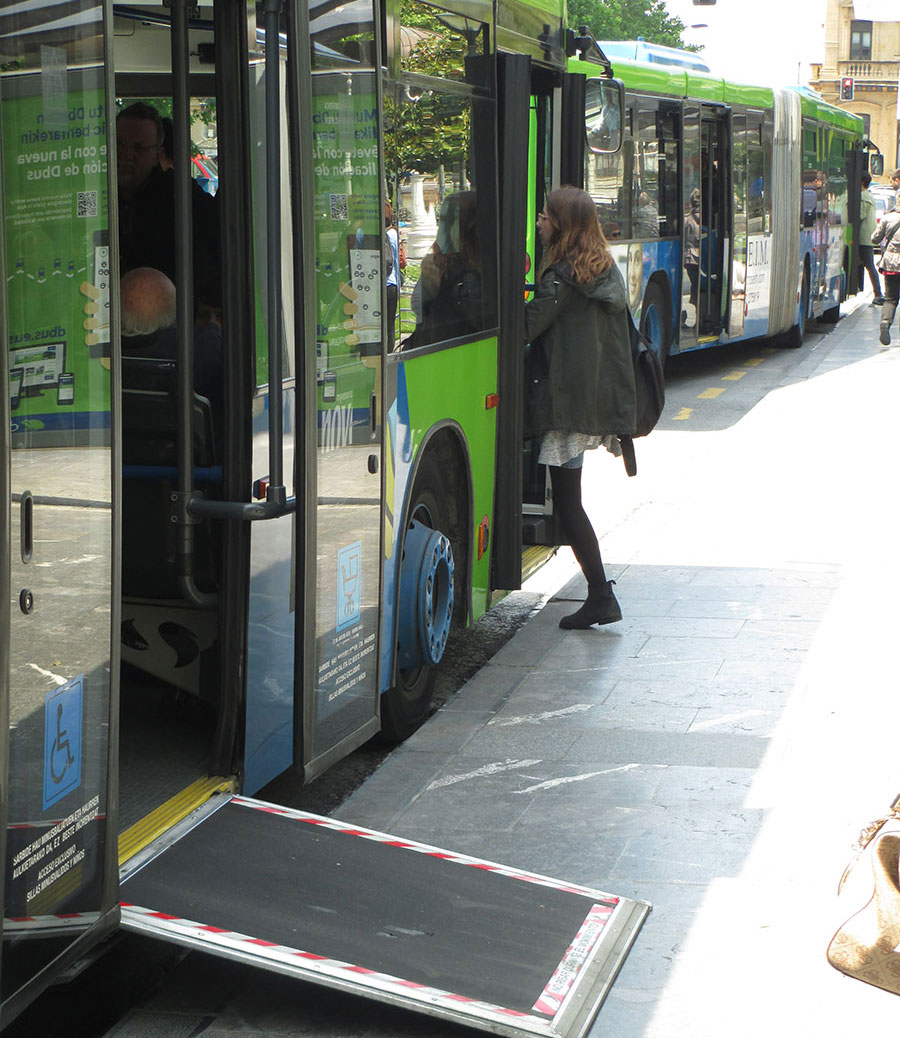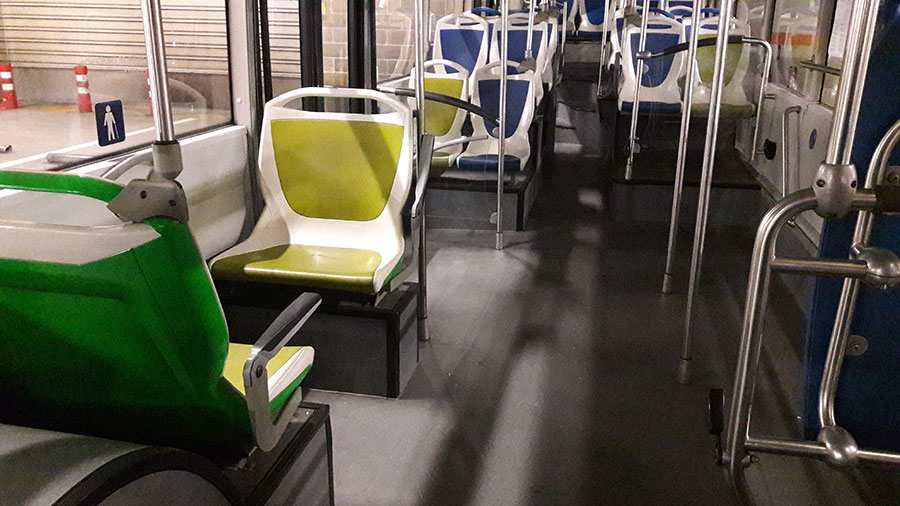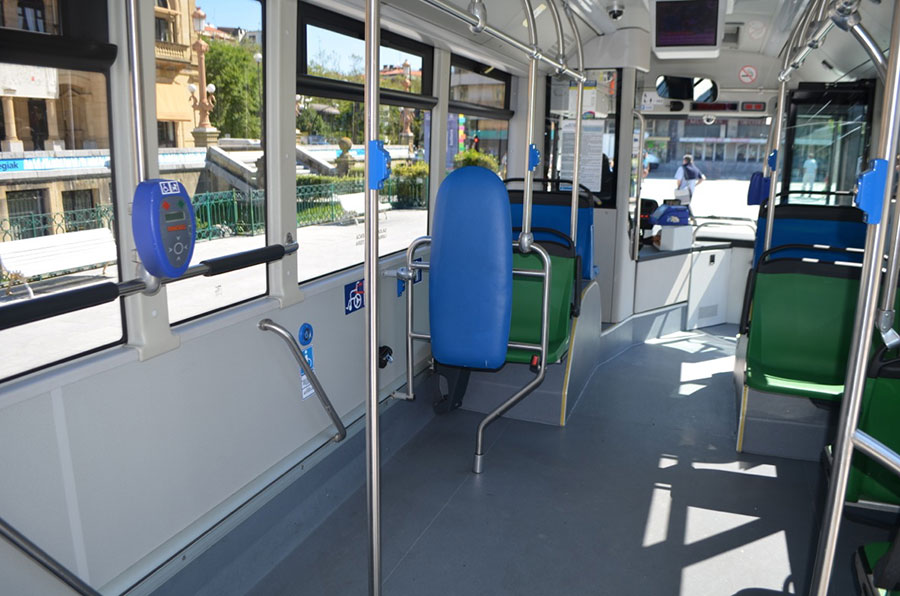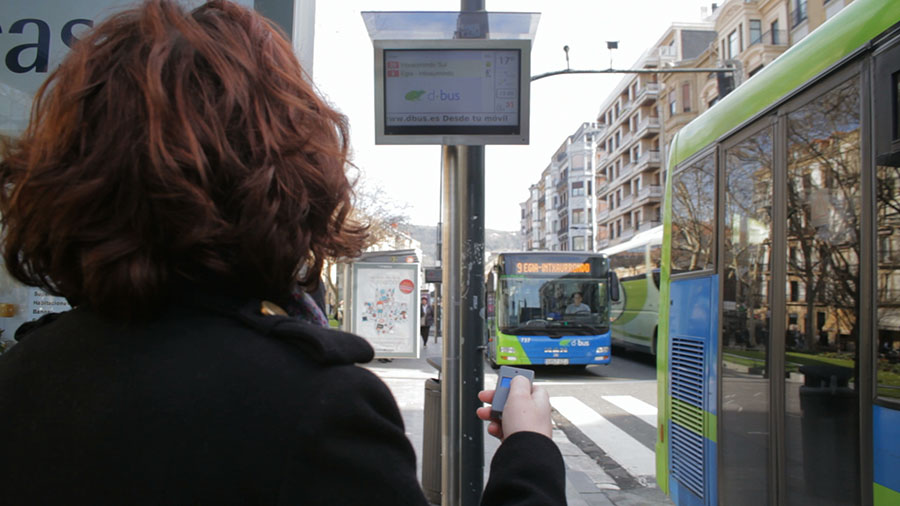In order to provide the population with a quality service, regardless of their condition, the Dbus fleet of buses runs accessible buses. All the company’s buses are accessible and equipped with modern technologies for use by people with mobility, hearing and visual impairments.
Low floor and access ramp
All the company’s buses, whatever their size, have low floors that make it easy to get on and off. The entire fleet is equipped with ramps to ensure easy access for people with wheelchairs and walking frames.
Seats reserved for people with reduced mobility
Since 2005, all seats reserved for people with reduced mobility have been green rather than blue. These seats are for the use of people with reduced mobility, which includes elderly people, people with permanent or temporary mobility difficulties due to physical injury and pregnant women who, for safety reasons, also have reserved seating. Children of less than six years and adults carrying babies are also included on this list.
Reserved platform and central card checking machine
Both buses and microbuses have a platform reserved for wheelchairs and baby seats. The platform is equipped with safety belts to enable users to travel comfortably, and a card checking machine so they do not have to go to the front to pay for the journey, thus avoiding risks
Audio information systems
Dbus has three audio information systems for the convenience of blind and visually impaired passengers on San Sebastian’s buses. These systems offer information in three different ways:
- On the bus, the system announces the next stop.
- Outside the bus, warning that the bus is arriving and its destination.
- Electronic panels at bus stops display information about the line, how long until the bus arrives and the bus destination.
The audio system is activated with a control device provided to blind passengers, which is the same device used to activate the audible features of traffic lights in the city. People requiring a control device should apply to the National Organization of the Blind in Spain (Organización Nacional de Ciegos Españoles -ONCE) if they are members, or to the Gipuzkoa Territorial Transport Authority (Autoridad Territorial del Transporte de Gipuzkoa).
Virtual information systems
There are TFT screens installed on buses that display real-time information about the bus route, upcoming stops, connections with other lines and bus arrival times at stops.
This information offers guidance to people with hearing and cognitive difficulties and other users and makes it easier to plan journeys and any transfers.
Subsidised fare systems
Users with disabilities are entitled to a minimum subsidy of 52% when travelling with the Mugi Card. Subsidies corresponding to these passengers are applied whenever the card is topped up.
Blind people and wheelchair users may bring a companion, free of charge, to ensure the person’s safety and comfort at all times.







